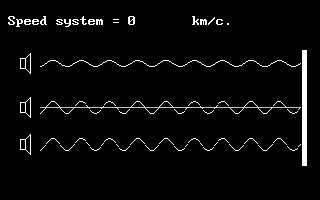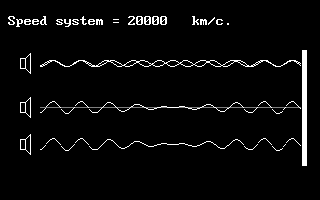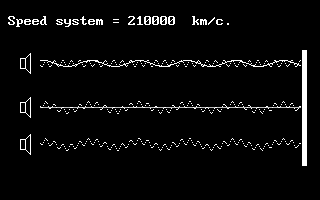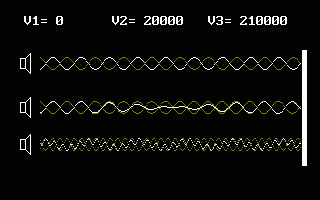|
<<< |
|
|
Fig.25 a) direct and counter waves; b) wave superimposition: instantaneous show of resultant; c) developing in time the resultant outlines in space a picture with well-defined anti-nodes and nodes, i.e. the standing wave.
Fig.24 Thatís how a computer model looks in which the oscillationsí source is presented as a speaker. The direct and counter-waves have equal frequencies but different velocities, and therefore different lengths. Addition of these waves results in the beat. If this process is examined as summed up in time, the nodes and anti-nodes will be visible which allows one to speak of a standing wave.
Fig.57 Emittersí frequency is constant. With the deviceís velocity increase relative to medium, and in accordance with Dopplerís rule, the direct and counter waves change their lengths. For the inside observer in the system which changed speed the frequencies of these waves will remain equal but the nature of interference is to change, which is to lead to contraction of distance between the neighboring nodes, standing wave length change, and increased number of standing waves. The package of standing waves compresses.
|



